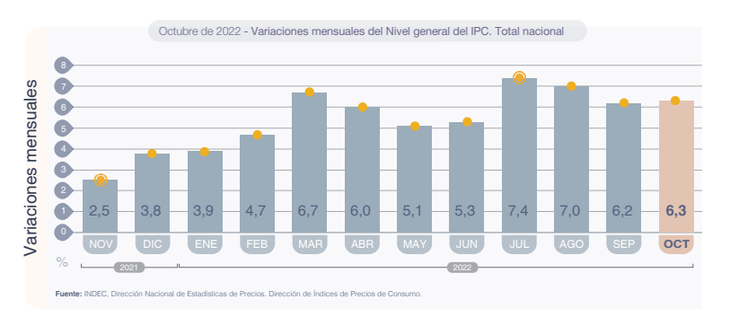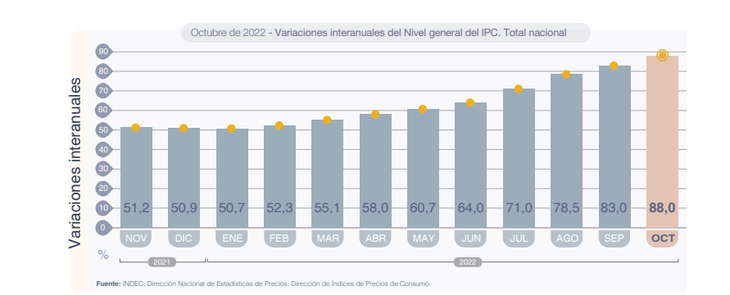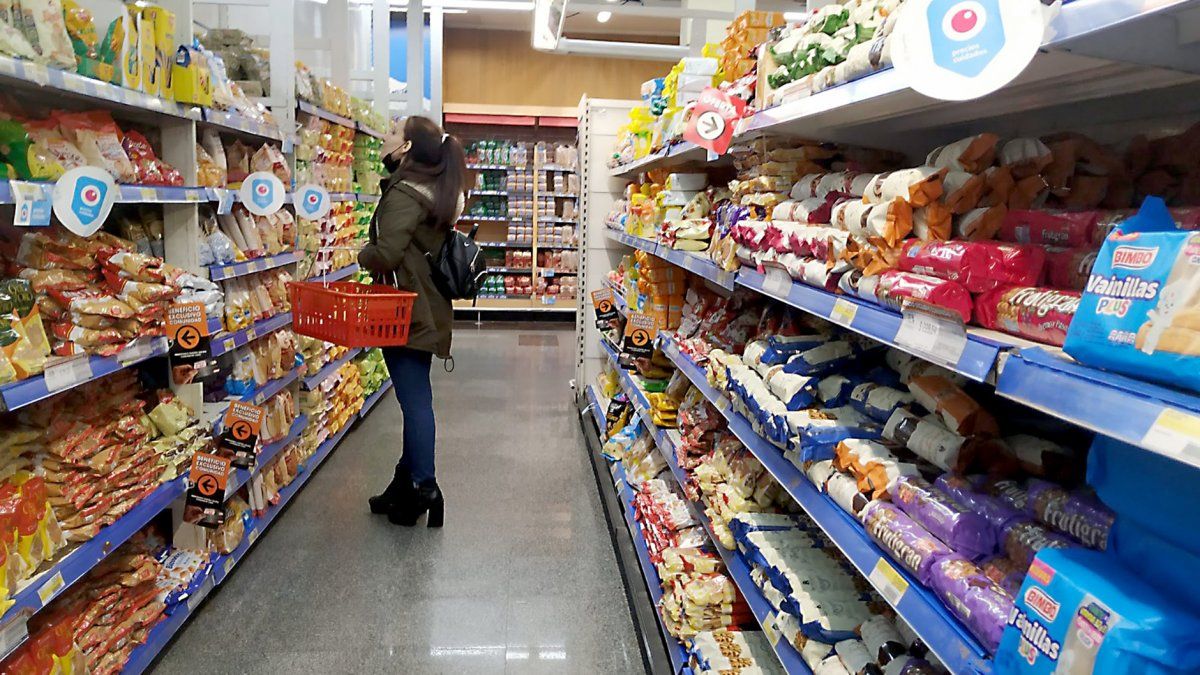inflates october indec.PNG
As reported by the official statistics agency, during October, there were also wage increases for workers in private homes, with an impact on Home equipment and maintenance (4.9%); the share of prepaid medicine, which affected the Health division (7.1%); the increases in tolls and fuel, and the drag left by the increase in public transport fares in September, which had an impact on the Transport division (4.5%).
inflates monthly var.PNG

The rise in Food and non-alcoholic beverages (6.2%) had the greatest impact in all regions, highlighting the increase in Vegetables, tubers and legumes; and fruits.
The INDEC also stated that at the category level, it led the monthly rise Seasonal (9%) – explained in part by the aforementioned increases in Vegetables, tubers and legumes, and Fruits–, followed by Regulated (7.4%) and, finally, IPC Núcleo (5.5%).
YoY Inflates.PNG

“Although worse data was expected, it is still an acceleration compared to what was two months of low month-on-month inflation. The data is not positive. Now we have to wait for the Fair Prices program. But we do not see that inflation can break that floor of 6% per month in the short term“, said to Scope Guido Lorenzoeconomist at the consultancy LCG.
While, Camilo Tiscorniafrom C&T Asesores, said that A fact to highlight is that core inflation, that leaves aside regulated and seasonal products, was 5.5%, similar to that of September.
And warned: “The partial data for November point to inflation slightly above 6%. If inflation were to be 6% again in December, that of the year would close at 99%, but if it climbed to 7%, replicating the frequent rise of the last month of the year, it would reach 101%.“.
For Eugenio Mari, Chief Economist of the Liberty and Progress Foundation, “The relative pax exchange rate for October was noted in the CPI for October. However, this was achieved based on resuming the bleeding of the Central Bank’s reserves, which between October and so far in November has already lost more than US$1 350 million. In other words, they are ‘buying’ a slowdown in the price of tradable goods by losing international reserves.”
Regarding the Fair Prices program, Marí indicated that “the Government itself recognizes that it is not a measure to lower inflation. Achieving this last objective will require efforts towards fiscal order and monetary discipline. Both things are beginning to be seen, but only lukewarmly.” .
In this sense, the Chief Economist of the Libertad y Progreso Foundation recalled that “Last week an alarm signal appeared, which was the low adherence of private individuals to the debt swap. This is important because the Treasury has opted to finance itself in the debt market in pesos and lower its monetary financing requirements. But if the local debt market closes, then only financing via issuance will remain, which is equivalent to higher inflation”.
It should be remembered that the Survey of Market Expectations (REM) of the Central Bank of the Argentine Republic (BCRA) projected for October that inflation reached 6.5%, the annual forecast placed it at 100%.
The Institute of Statistics for Workers, from the UMET University, estimated that the price increase was 6.7% in October and specified that it was driven by Education (+9.7%) and Health (+8.2 %). While, Food and beverages, the division with the greatest weight in the basket, climbed 6.6%.
While the index prepared by the City of Buenos Aires reached 7% and thus accumulates 72.9 percent per year and an interannual variation of 84%. The data implies a strong jump compared to September, when the same record had been 5.6%.
prices-inflation.jpg

The consultancy C&T, for its part, indicated that “the survey of retail prices for Greater Buenos Aires had a monthly increase of 6.8% in October.”
At the same time, Analytica estimated that inflation reached 6.9%, while Eco Go placed it at 6.6% and LCG at 6.5%.
Source: Ambito
David William is a talented author who has made a name for himself in the world of writing. He is a professional author who writes on a wide range of topics, from general interest to opinion news. David is currently working as a writer at 24 hours worlds where he brings his unique perspective and in-depth research to his articles, making them both informative and engaging.




